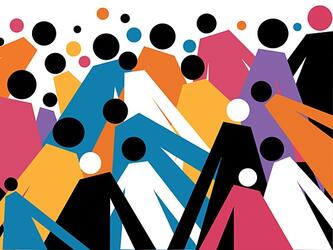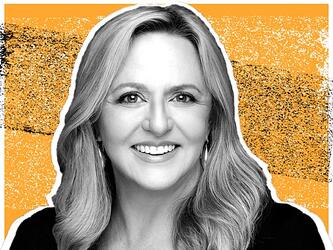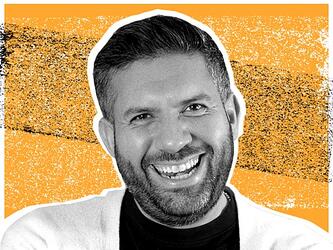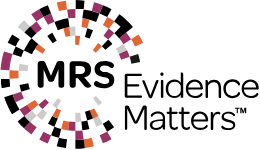Are we really irrational, or just adaptively rational?
Thanks to all the books, conference talks and articles on behavioural economics in the past couple of years, we’ve all learned just how irrational we humans are. But a new book called The Rational Animal by Douglas Kenrick and Vlad Griskevicius sets out a framework to understand how biases are not necessarily irrational when examined from an evolutionary perspective.
As the book says: “Bias is often seen as a dirty little word. We are taught that we should avoid bias and instead strive to be accurate, rational, and smart. Yet the reality is that our minds evolved to be biased – to predictably make specific types of errors and decisions that appear irrational.”
This approach, sometimes known as “adaptive rationality”, shows why our apparently biased behaviour is actually rational in the sense that it helped us to adapt to our environment either today, or at some point in the past. We put some questions to Vlad Griskevicius to find out how this idea of adaptive rationality can be of use to market researchers and marketers.
Your book centres on the key insight that human decision-making serves multiple evolutionary goals. If people want to satisfy these goals, how do they decide between them or trade them off?
Whether one goal dominates another is a function of the situation and the person: if you’re on a hot date and come across a man with a gun, it depends on the individual whether their ‘self-protection’ or ‘mate acquisition’ subself dominates. The subselves and goals do also collaborate and feed off each other. For example, some people would argue that status and mate acquisition are the same thing, which is largely true for men but not so much for women.
Throughout the book, you take a critical view on the findings and views of well-known behavioural economists, including Daniel Kahneman. What’s your main critique of them?
Actually, I’m a huge fan of behavioural economics. My take on this is that BE has found a list of biases and deviations from rationality and this book is trying to come up with a theory for why we have these biases. The most novel aspect of the book is looking at the fundamental, evolutionary motives – a lot of these biases exist to solve adaptive problems, so we need to ask what problem it’s addressing. I wanted to develop a framework to help predict behaviour more accurately.
“In some situations it’s actually better to be overconfident – it might make you more likely to get a promotion”
What do you think is the most ‘misunderstood’ bias?
One that comes to mind immediately is the overconfidence bias: for example, some 90% of people say they are above-average drivers, even if you ask them when they are recovering from a car accident in a hospital. However, recent research suggests overconfidence is actually evolutionarily adaptive as it increases persistence. In some situations it’s actually better to be overconfident – it might make you more likely to get a promotion.
The instability of preferences is also one of the cornerstones of behavioural economics, and potentially poses a huge problem for market researchers: so far, we’ve largely assumed – like the rational economists – that consumers’ preferences are stable over time and we merely need to ask them to find out what they are.
As with biases, unstable preferences make predicting behaviour very difficult. Theoretical frameworks are highly useful in marketing contexts because they take out randomness: people are inconsistent by design, but predictably so. For marketers, this might impact decisions on advertising time, which is usually bought based on things like the demographics of the viewership – the programme itself is rarely considered. However, the effectiveness of the advertising depends on the content, so it really matters. Each ad will be consistent with a specific evolutionary goal and marketers should either identify what it is, and deliver it along with similar content, or deliberately activate that goal. The same ad can produce a wildly different response: for example, imagine the difference between seeing an ad at a sporting event where everyone is riled up compared with seeing it at someone’s house.
Are there particular kinds of preferences that are less stable, and which ones are most likely to matter to businesses?
No research has been done on that but some attitudes are pretty stable. For example, activating different subselves won’t change your views on abortion, but FMCG products are much more malleable. Overall, when it comes to consumer behaviour, much more of it falls into the malleable section.
In your view, what are the biggest lessons for both marketers and market researchers in your book? How do we understand consumers’ motives without asking them for their reasons? Will some of the techniques of behavioural economists such as experiments or tools like the Implicit Association Test do the job?
In terms of focus groups, the problem isn’t so much with the methodology itself but that it’s often that the people conducting research are lacking a theoretical framework to underpin their thinking, so it’s not anchored to anything, but merely based on people’s intuition about what could be going on. This book provides a universal, cross-cultural, cross-category framework of motivations: while the external expression of the motives and how you achieve the evolutionary goal might slightly change depending on age, sex, life history and culture, the underlying motives remain. Ultimately, it’s about shaping people’s preferences at the point of choice.
- This interview is extracted from Issue 4 of Impact Magazine, out this week
- Co-author Leigh Caldwell is a guest speaker at the upcoming MRS Creativity Lab, ‘Using science, psychology and data to decode the world’. Click here for more details

We hope you enjoyed this article.
Research Live is published by MRS.
The Market Research Society (MRS) exists to promote and protect the research sector, showcasing how research delivers impact for businesses and government.
Members of MRS enjoy many benefits including tailoured policy guidance, discounts on training and conferences, and access to member-only content.
For example, there's an archive of winning case studies from over a decade of MRS Awards.
Find out more about the benefits of joining MRS here.













0 Comments